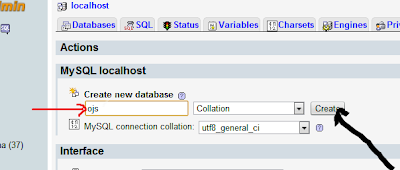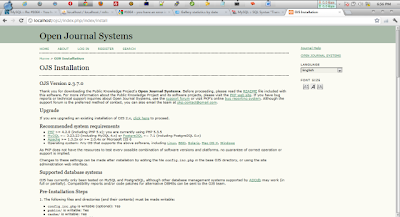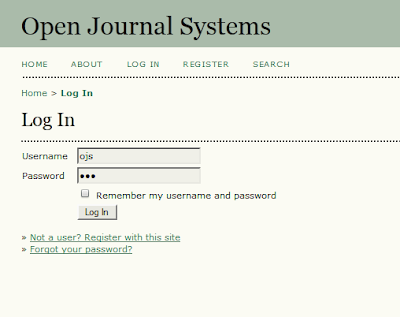OJS (Open Journal System) is an open source software that is used for the publication of research journals an agency, college or the other. OJS was developed by The Public Knowledge Project community (PKP) and is dedicated to improving the quality of research and research from the scientific community and the public. This operation is the result of collaboration between Simon Fraser University Library, the School of Education at Stanford University, the Canadian Centre for Studies in Publishing at Simon Fraser University, the University of Pittsburgh, and the California Digital Library. (Source: http://pkp.sfu.ca/about)
Install Open Journal Systems On Computer Windows OS Localhost
As for how to install the Open Journal Systems (OJS) on windows OS are:- Prepare all 'ammunition' to install OJS, among others, are used to XAMPP localhost server. Then Install xampp on your computer.
- OJS Software Download from here. Then extract the folder C:\xampp\htdocs,
- Then rename it to OJS, so much easier when we are accessing in browser
- I assume that xampp has been going well. Then open a browser and enter the address http://localhost/phpmyadmin/ and click on the Privileges and add the new user
- In this tutorial, the author makes: User: ojs Host: localhost Password: ojs2
- Create a new database with the name "ojs"
- Furthermore, the type the url address http://localhost/ojs/, it will show home ojs installation
- On locale settings, fill in: Primary locale: English Additional locales: English In Client Character Set, Character Set connection, select the Database Character Set Unicode (UTF-8) In the Security settings select: MD5
- For the administrator account, in this tutorial the author makes: (* To be filled in the username and password match what you want.) Username: ojs Password: ojs
- In the database settings, enter: ( Filled suit that was created earlier.) Database driver: MySQL Host: localhost Username: ojs Password: ojs2 Database name: ojs
- After all filled in correctly, click Install Open Journal Systems. If there is no problem it will look like the image below:
- Next we try the OJS access by entering the url http://localhost/ojs/
- Click on LOG IN
- Enter the account that was created on the account administrator earlier
- Done.










